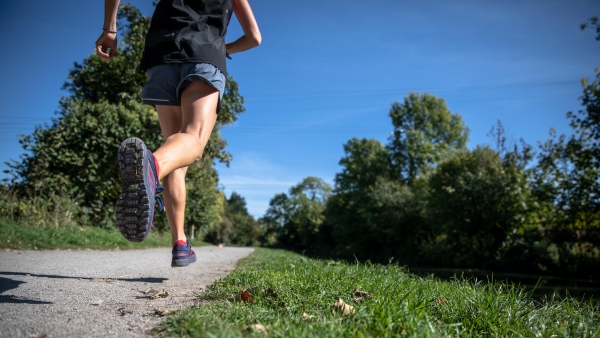 Photo by Stage
7 Photography
Photo by Stage
7 Photography
Shin splints can be one of the more frustrating, nagging aliments you can pick up while running. The micro damage to your shin muscles and bone can leave you with acute pain in your shins when you are just trying to hit your weekly mileage goals.
Well, you don’t have to be plagued by shin splints forever. Along with making sure you do a mix of low- and high-intensity cardio, here are some other things you can do to prevent future shin splints.
Engage In A Variety Of Stretching Exercises
One of the first things you should be doing to prevent shin splints is to engage in a variety of stretching exercises. While it can be a bit painful, especially if you are close to having a case of shin splints, it is important to keep that area flexible and supple. Some great shin-targeted stretching exercises are:
- Heel drop
- Point and flex
- Toe curl
- Single-leg bridge
- Toe walk
- Squat walk
Along with doing these exercises to help prevent shin splints, you should also incorporate regular flexibility training into your routine to protect your whole body. There are many beginner yoga videos you can watch for free on YouTube and use to develop your ideal routine or even better, join a beginner yoga class to learn the basics from a professional instructor.
Consider Changing Out Your Shoes
Many people tend to grab their favorite sneakers and just use them as running shoes, especially if the brand is known as a “sporty” shoe. However, this doesn’t mean that it’s the right shoe for your running needs. You don’t need to overspend on fitness to find the right shoe, but they are an investment in your overall health and fitness.
A good way to find the right running shoe for your needs is to visit a specialty running store. They can analyze your gait, talk to you about what issues you’ve been having while running, and help you try out new brands that you may have never heard of, but are perfect for you.
Also, you may have simply worn out your current shoes. Generally, a good running shoe can last between 300-500 miles worth of running. If you are a beginner runner or running low mileage, this number may sound an outrageously long way away.
Consider if you wear your running shoes for other activities. If you take them out for hiking, errands around town, and as everyday shoes, they can wear out more quickly than you think, and you will need to replace them or buy a second pair and rotate your use.
Drop Your Current Running Mileage
A major factor in shin splints is when you up your running mileage too quickly. I completely understand the desire to keep pushing yourself to run more and long distances, but by going too long a distance too soon, your shins — as well as the rest of your body — will not thank you, especially if you develop stress fractures.
Instead, you will want to increase your mileage by 10% every other week. By spacing it out and having a week where your body can adjust to the mileage increase, it is far less likely that you will suffer from shin splints or other common running ailments.
Alter How You Strike As You Run
How your foot strikes the ground can also determine whether or not you suffer from shin splints in the future. Heel striking can cause you to bleed off a lot of your forward momentum and cause you to use more energy to keep running while striking with your toes can stress your calf and shin muscles.
Instead of these two strike patterns, you should be aiming to strike midfoot. With a midfoot strike, you will strike the ground directly under your body, which keeps you from overstriding and stressing out your lower body.
Opt For Softer Running Surfaces
Part of what triggers shin splints is repeated running on hard surfaces such as concrete and asphalt. While trail running or jogging on grass can be a great alternative, not everyone lives where that is a practical option, as many expanses of grass are no larger than a football field and good trails may be hours away.
Instead of you trying to go to the trails, you can bring the softer surfaces to your home. All you need to do is purchase a treadmill that comes with high-quality cushioning technology, like NordicTrack treadmills. With a treadmill in your home, you can split your runs between indoor and outdoor, and give your shins the softer surfaces they need.
Take Time To Rest
Last, but almost most importantly, you need to make sure you take time to rest your body. As shin splints are a symptom of overuse, you can take it as a sign that you have not been adequately resting if you start to notice the sharp pains of shin splints.
If you are a new runner, you should be doing 2-4 runs a week, with none of those runs being over 30 minutes long. While it can be exciting to start running, you will enjoy it longer if you protect yourself from some of the common new runner injuries.
By combining these various strategies, you should be able to prevent future shin splints and likely other overuse injuries that many runners struggle with over time.